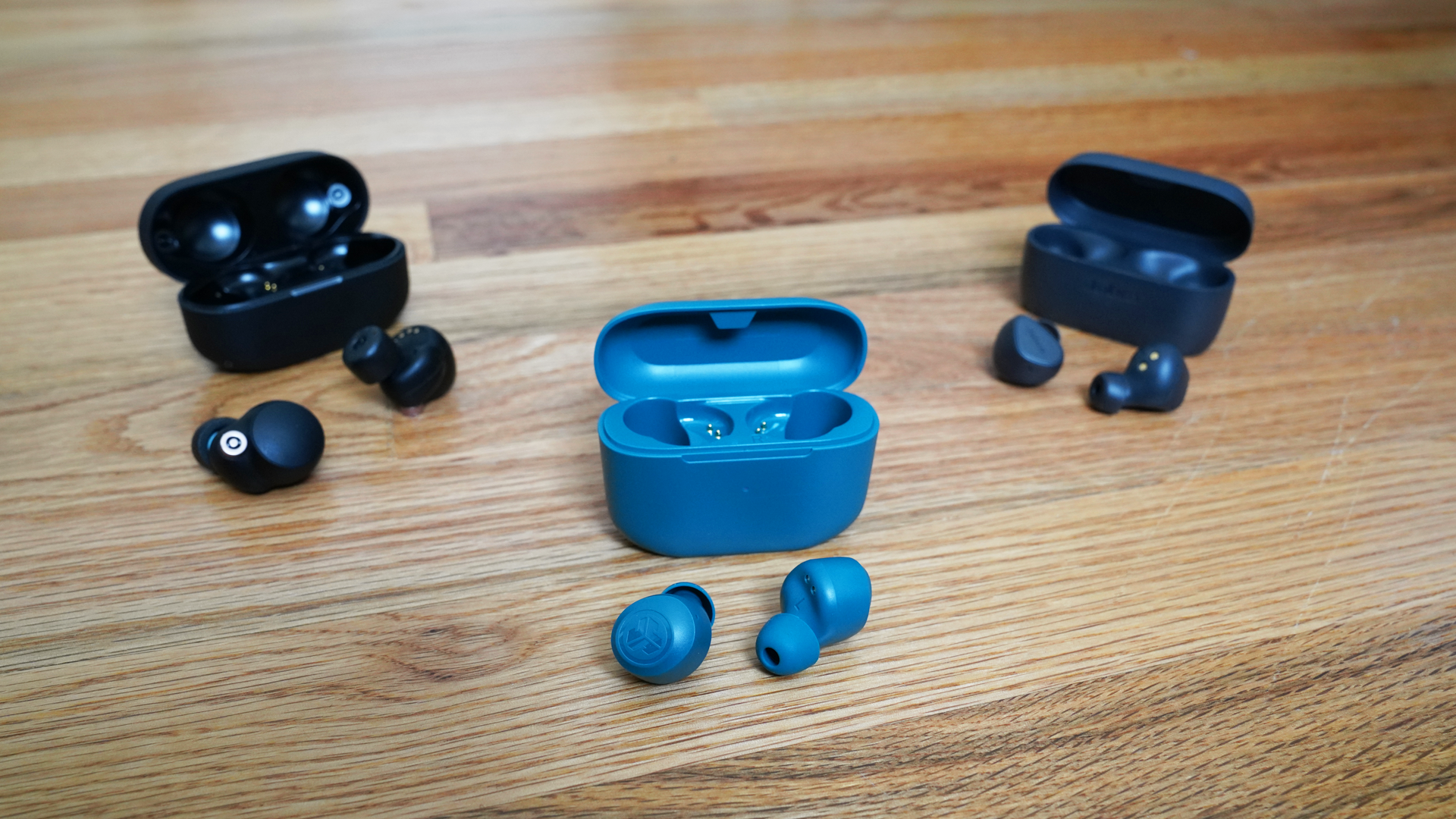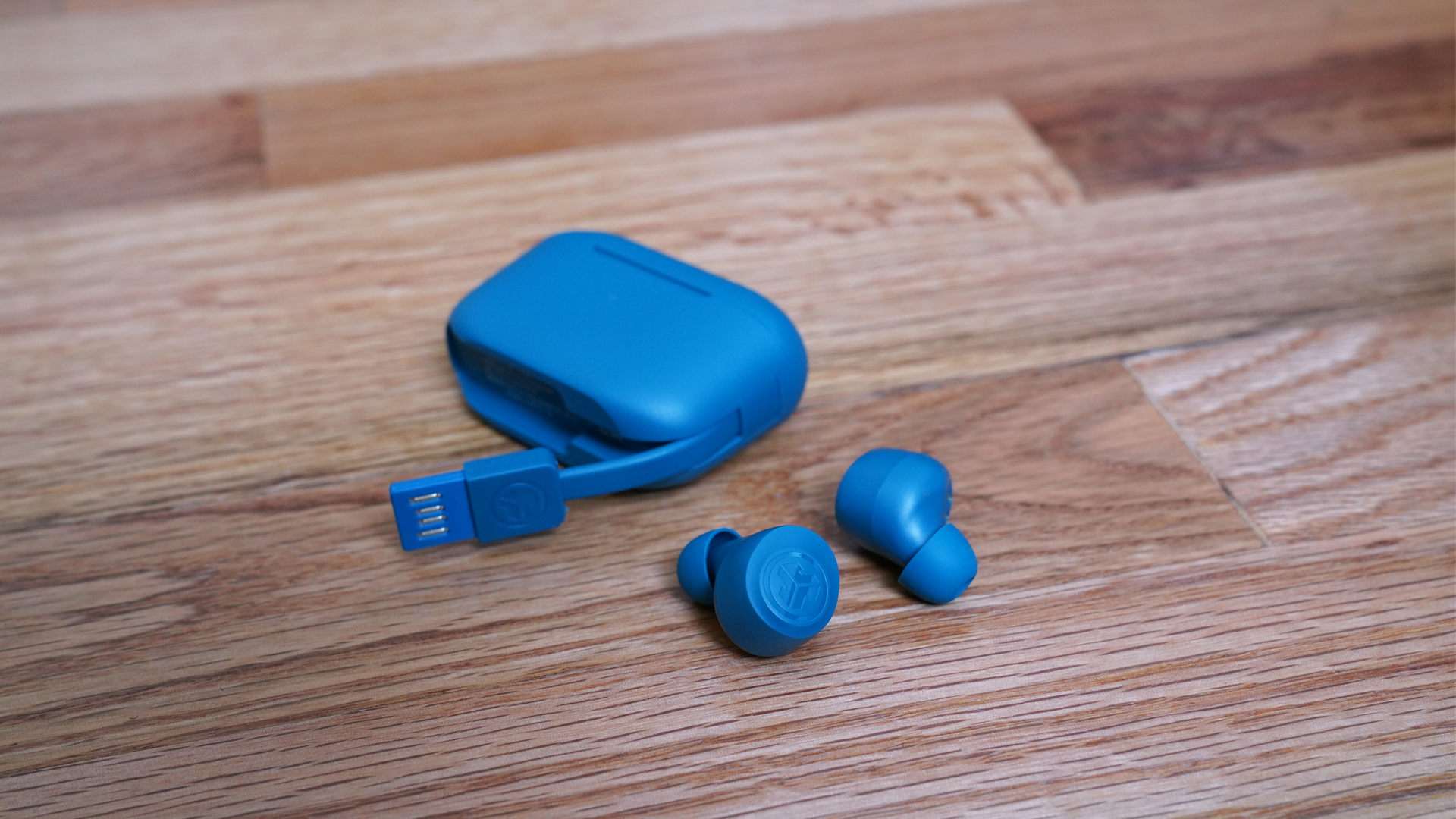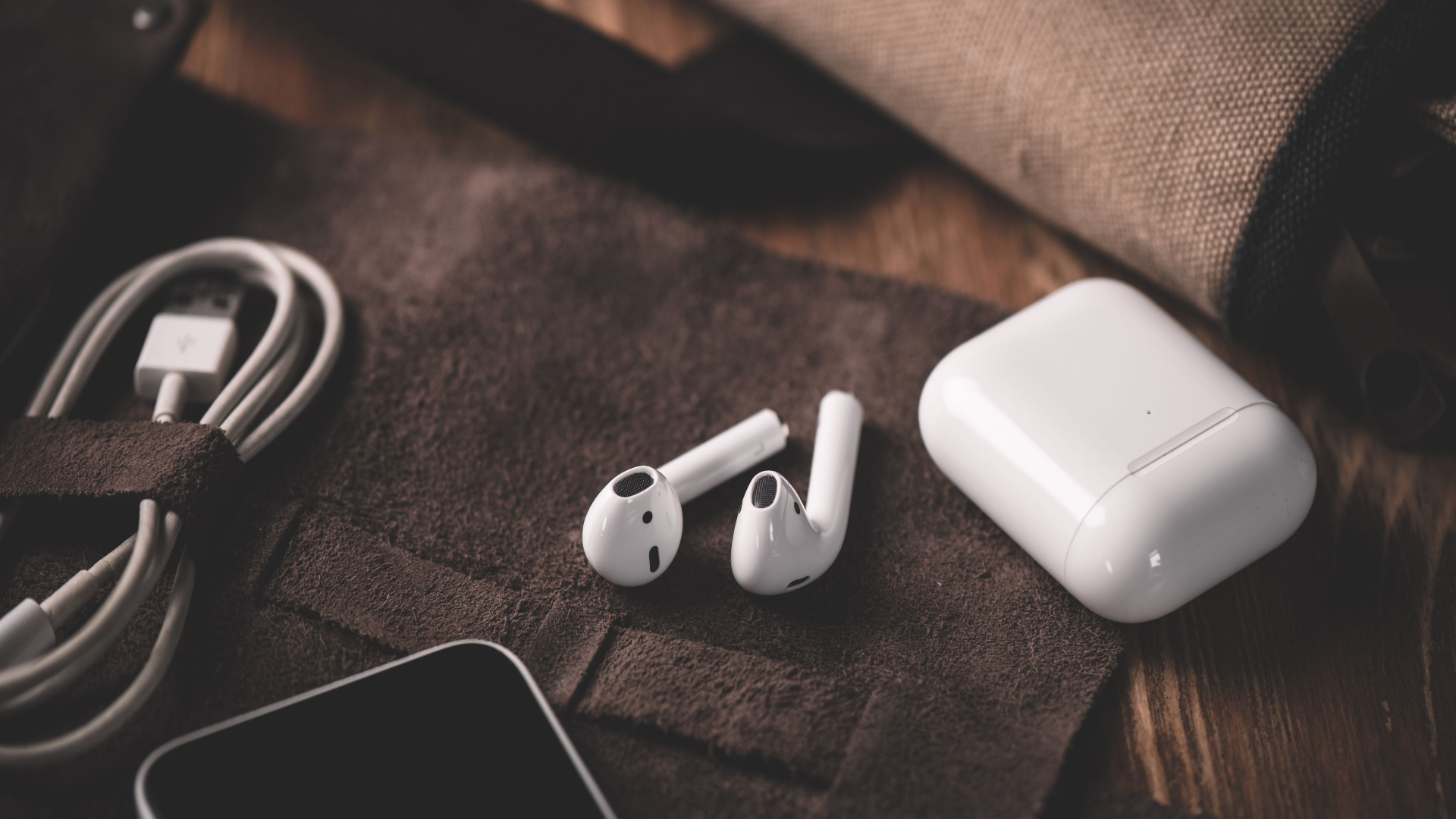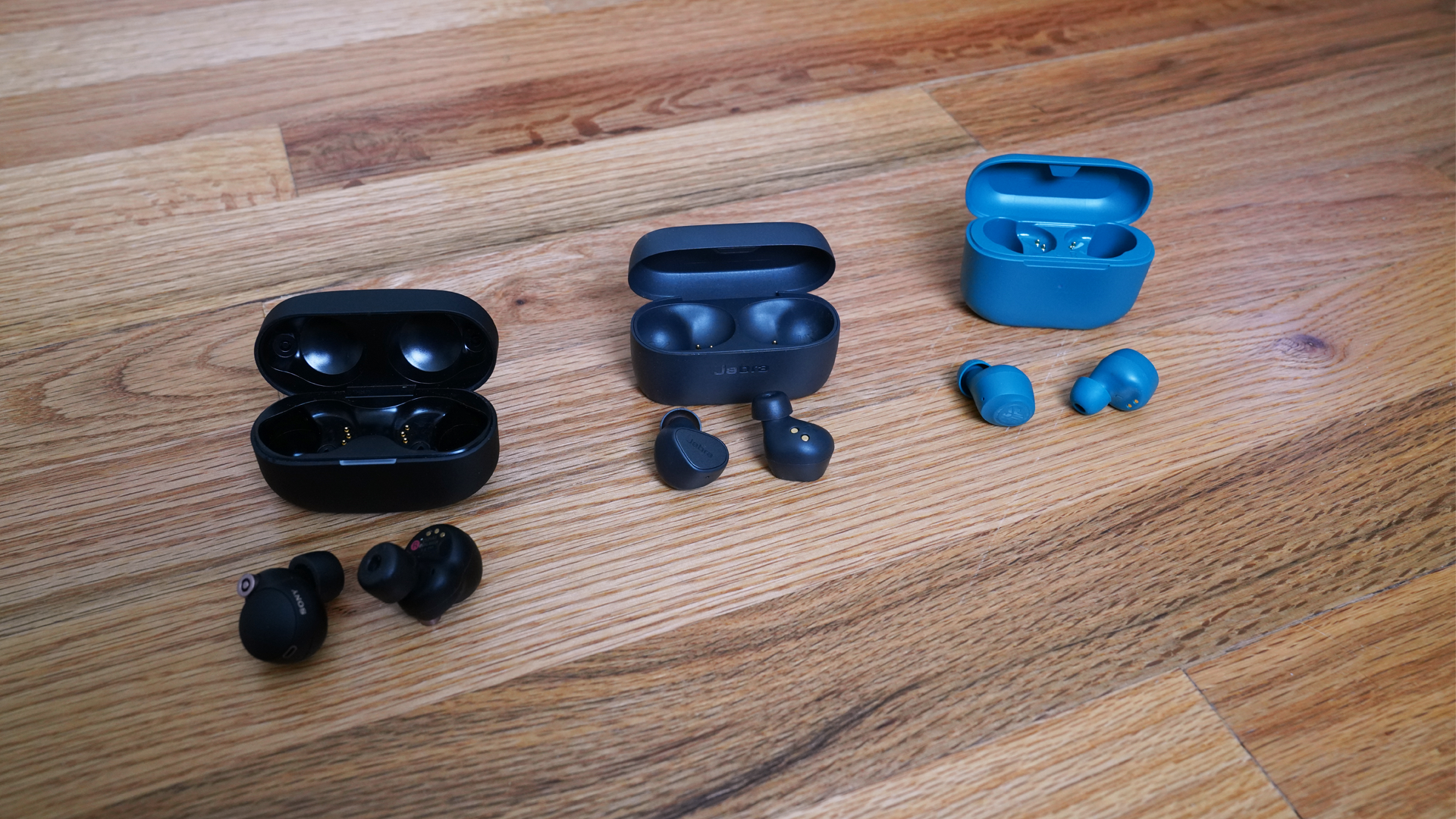Quick Links
Good earbuds are one of life's little pleasures, allowing you to enjoy the sounds of your favorite bands (and podcasts and movies) wherever you go. But if quality audio and features like active noise cancellation (ANC) are often only found in pricey buds, what does $20 get you?
Why Should I Care About Cheap Buds?
Growing up, I always had a pair of ultra-cheap headphones. You know, the ones that came with the cheapest portable CD players, that were super ugly and uncomfortable? And even though those often struggled to sound good (or, heck, even decent), I kinda grew attached to them. Those flimsy plastic headphones grew incrementally better year by year, and I always looked forward to getting my next pair for Christmas to see what they had to offer.
Now, after spending years professionally testing a variety of earbuds and headphones (cheap and pro-level alike), I've seen precisely what kind of features and audio quality you can get at all price points. For the most part, you get what you pay for with earbuds. Mid-range and higher price points (starting around $150) net you things like higher-quality hardware components, robust customization for EQ and other settings, and fantastic active noise cancellation.
I spend a lot of my time with great earbuds in my ears, shouting from the rooftops about how great they are, and it got me wondering, what do today's cheap earbuds have to offer? We're talking earbuds you can grab at the checkout line at Best Buy or 7-11 as an impulse-buy cheap. Do they sound good? Are they comfortable enough to wear all day? How's their battery life? Do they have a companion mobile app that'll let me customize stuff?
I was immensely curious to learn how sub-$20 earbuds stood up against those from other price points, so I went to my local Best Buy and picked up a pair of inexpensive true wireless buds---JLAB's Go Air Pops---for about $18. I also took an in-depth look at dozens of other earbuds around that same price. Here's how they stack up:
Case & Earbud Design
When comparing the design of cheap versus expensive earbuds, what are the real differences? Let's start with the charging case. Cases for budget buds are almost always made from lightweight mid-grade plastic that won't feel as durable as their pricier counterparts. These cases will have more give when you squeeze them and will likely have much lower IP ratings, meaning they may not hold up as well over time when you put them in your pocket or gym bag, or get sweat or rain on them.
The most common difference, however, is probably with the charging port. Pretty much all premium buds use USB-C, a newer standard that can charge faster and at a higher wattage. That's the same type of connector you're likely to find on your smartphones, tablets, and even laptops, meaning you'll only need to tote one charging cable around. Most even support Qi wireless charging and have a quick charge feature, too!
Many inexpensive buds opt for older standards there, like USB-A or even micro-USB (oof); some brands even create cases with the charging cable built in, like the JLAB's I picked up for this article. While those are far cheaper for manufacturers to implement, they aren't as efficient. This shouldn't be a dealbreaker, but you should note that it'll take much longer for your earbuds to finish charging and that you'll need to add yet another cable to your tech setup to charge it. Do be aware, though, that if a case has an attached cable and it breaks, you're out of luck.
As for the design of budget earbuds, they, too, are made of lower-quality components; think lower-grade plastic housing, smaller drivers, lower-quality microphones, and less-responsive button controls. On the plus side, lower-cost earbuds are usually smaller since they have less to pack in. This can mean a lighter and less bulky feel/look if that's what you're into. And personally, I find that cheaper buds consistently have a less attractive design; they just look, well, cheap.
Fit & Comfort
If your earbuds aren't comfortable, don't fit securely, offer poor isolation, and don't create a good seal, they aren't worth buying no matter what they cost. That said, I have found those issues to be far more prevalent in low-cost earbuds. And while it is totally possible to find affordable buds that are comfy and fit well, it's not common.
Many folks buy true wireless earbuds to use while working out, so a secure fit is an important metric to consider. You don't want your earbuds to fall out while stretching, running, or riding your bike, so finding a pair that fits is valuable. I've owned and tested buds across various price points and would say that, as a general rule, pricier options almost always tend to fit better and feel comfortable (although there will always be exceptions to rules).
Additionally, part of ensuring a good fit and listening experience comes down to which type of ear tips are used: silicon or foam. Silicon tips are flexible, durable, more sanitary, and easier to clean. However, they don't usually offer excellent isolation, and they often cause that clogged ear feeling and become uncomfortable after long periods. And because of their inability to create an optimal seal, silicon tips aren't often associated with great sound quality.
Foam ear tips are widely regarded as more comfortable (even when you wear them all day). They also do a better job of expanding to fit your unique ear shape for optimal isolation and creating a tight seal. Plus, they can help ensure better active noise cancellation on buds that offer that feature. Due to foam's ability to mold to your ear's shape, it can funnel sound directly into your ear canal more easily.
Silicon tips are pretty much always used on lower-cost earbuds; likewise, it's far more common to see foam ear tips on higher-end buds. It's worth noting that earbuds almost always come with a few different ear tip sizes in the box, giving you a little more control over finding a more optimized fit. However, with very few exceptions, you can usually buy replacement tips of either variety and swap those out on your earbuds.
Admittedly, finding the perfect fit when it comes to earbuds requires some effort, luck, and money on your end (I know, that's not fair). You may have to try a few different earbud brands at different price points, as well as different ear tip types and sizes, to find what works best for you, but it's absolutely worth the effort if you have some extra cash and are gung-ho about finding the perfect pair. And if you aren't sure about any of this, a $20-ish pair (like the JLAB's I bought) is a great place to start. For many folks, inexpensive buds with silicon tips are all they want or need.
Extra Features
Earbud features are one of the categories manufacturers use to help make their products stand out at any price point. In my experience, I've found that the more money you spend, the more features you get. Still, some try to sell their budget buds by advertising things like ANC or crazy battery life, even though the buds don't sound good or feel comfortable. It's a balancing act.
Case in point: these JLAB earbuds I purchased. Feature-wise, for under $20, these buds offer: 32 hours of battery (between the buds and their charging case), a small budget-conscious design, 6mm drivers, Bluetooth 5.1 support, silicon ear tips, limited on-device EQ settings, basic touch controls, a fun color, and charging via USB-A only.
They do not have ANC (or, likewise, any ambient/hear-through technology), USB-C or wireless charging, fast charging, Bluetooth multipoint, a companion mobile app that gives you deep control over EQ and other settings, a premium feel and design, or any of the other stellar features you'd commonly find on mid-range and higher-end earbuds. And we haven't even touched on sound quality yet (we will, below, and rest assured there's a lot to talk about there).
It's $20 we're talking about, though, so there have to be compromises somewhere, and this is where budget buds usually take the biggest hit (well, aside from sound quality). Manufacturers save a ton of money---and help you save, too---by cutting out premium features and focusing on the basics.
If you don't consider yourself an audiophile and are simply looking for a frill-free pair of buds that make it easy to listen to your favorite playlists and podcasts, you'll be happy with $20 buds. If you care about audio quality (and in most cases, you should), I absolutely think it's worth upping your budget to ensure you get higher-quality sound.
Sound Quality
Now to the fun part! Yes, the design, fit, and features are cool and all, but how good do cheap earbuds sound? Before we dive in, it's worth noting that budget-friendly buds are usually designed to appeal to a wide audience rather than one niche group (cough, audiophiles, cough) and tend to emphasize the bass range rather than the entire soundstage.
Bass and volume are the most noticeable differentiators of sound, so it makes sense that some manufacturers focus on a limited part of the soundstage with budget buds. Boosting both of these will be immediately noticeable to the average earbud user and can give the impression that they are high-performing while still saving money on components. But really, a full soundstage is what truly matters, and any sound system worth a premium price will give you the ability to boost the bass to your liking, without sacrificing the rest of the audio. That is why premium earbuds, headphones, and speakers have their premium cost, and one of the many reasons they are worth every penny.
So while you've likely seen a lot of reviews of $20 earbuds that talk about how they have "great audio quality," that's all relative to that price point. No one in their right mind would say these JLAB earbuds have "great audio quality" in the same way earbuds like Sony's WF-1000XM4s do---that would be patently absurd.
And accordingly, I'd say the JLAB buds sound fine ... for $20. The bass is present yet underwhelming unless you crank up the volume (something I'm hesitant to do after spending two decades playing in bands---I only have so much hearing left). Mids on the JLABs are hard to notice, vocals are muddy, audio sounds a bit compressed, and the soundstage is tiny. Still, those earbuds are ideally suited for listening to pop music while exercising or your favorite movie or podcast while you commute to work.
However, you'd never choose them if you wanted to listen to something that required a full soundstage or something that has a warm sound, like The Beatles or Neil Young. They won't allow you to hear parts of your favorite song you've never noticed before, but they'll be perfectly fine for catching up on your latest podcast on a plane or at the gym.
Should You Buy Cheap Earbuds?
So, after all that, are premium earbuds really worth all the hype (and the higher cost)? And is the basic functionality provided by $20-ish earbuds worth bothering with to begin with? While you definitely get what you pay for with earbuds, I can easily say yes to both questions, though for different reasons.
If you have the extra cash in your budget, I absolutely (obviously) recommend splurging for a pair of premium buds. They will always sound better, regardless of what you choose to listen to, and will allow you to hear songs the way they were designed to sound. Plus, they're flush with features and convenient tools that will enhance your listening experience.
If you don't have a massive budget for pricey earbuds (that's understandable) and are looking for something that'll simply let you listen to some music, cheap earbuds work in a pinch. They still offer fantastic battery life, simple touch commands, voice assistant capabilities, and a small and relatively stylish design. Ultimately, it comes down to your budget and how much you care about audio quality and having some extra features. At the very least, $20 buds are a great place to start in your own journey through the world of audio gadgets.
Wanna check out the JLAB Go Air Pop earbuds I bought? They're solid overall, with decent sound quality (albeit lacking slightly with bass), offer stupendous battery life, come in a variety of colors, and have a USB-A charging cord built right into the case so you don't have to track down a cable every time you want to charge them.
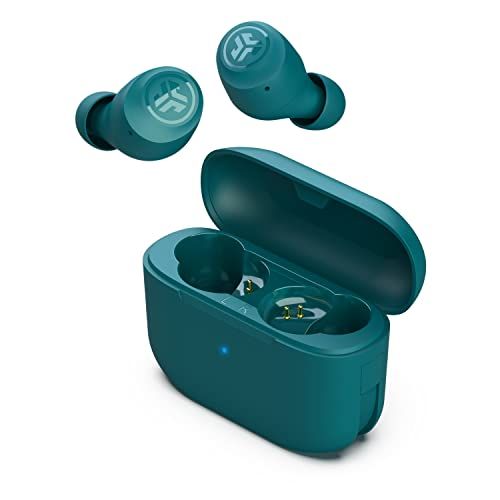
JLab GO Air Pop
Want to find the perfect true wireless earbuds? Start with this affordable pair!

